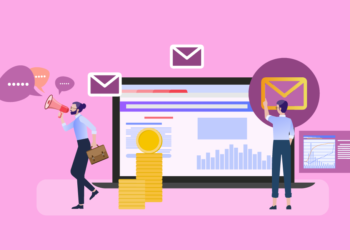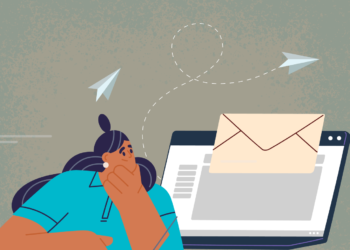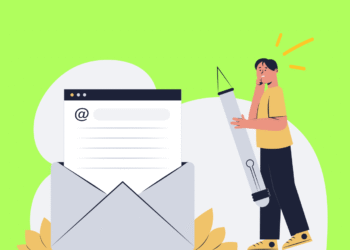Automating your e-commerce email marketing can be a game-changer for your business, especially when you’re trying to juggle a million other tasks.
The good news? Setting up automation isn’t as complicated as it might seem, and once it’s running, it’s like having a tireless sales assistant who never clocks out. Whether you’re looking to boost sales, nurture customer relationships, or just streamline your processes, email marketing automation can do it all. Here’s a step-by-step guide on how to automate your e-commerce email marketing for better sales and a smoother customer journey.
Step 1: Choose the Right Email Marketing Platform
First things first, you need a solid email marketing platform that supports automation. The best platforms for e-commerce—like Klaviyo, Mailchimp, ActiveCampaign, and Omnisend—offer features tailored to online stores, such as abandoned cart recovery, product recommendations, and detailed customer segmentation.
When choosing a platform, look for one that integrates easily with your e-commerce platform (Shopify, WooCommerce, etc.), offers robust analytics, and includes a user-friendly automation builder. Many of these tools offer free trials, so take some time to explore and see which one feels like the best fit for your business needs.
Step 2: Set Up Your Core Automation Workflows
Once you’ve picked your platform, it’s time to set up the core workflows that will drive sales and engagement. Here are a few essential automations to get started with:
- Welcome Series: This workflow kicks in as soon as someone subscribes to your list. Use it to introduce your brand, set expectations, and maybe even offer a discount to encourage that first purchase.
- Abandoned Cart Emails: One of the most powerful automations for e-commerce, abandoned cart emails remind customers of the items they left behind. Set up a sequence that includes a gentle reminder, followed by an urgency message, and maybe a final discount offer to seal the deal.
- Post-Purchase Follow-Up: After a customer makes a purchase, send a series of emails to thank them, offer product tips, suggest complementary items, or ask for a review. This helps keep your brand top of mind and encourages repeat business.
- Product Recommendations: Use data from past purchases or browsing behavior to send personalized product suggestions. This can be set up as part of your post-purchase sequence or as a standalone workflow triggered by certain actions.
Step 3: Segment Your Audience for More Targeted Campaigns
Segmentation is one of the keys to successful email marketing automation. Instead of sending the same message to everyone, segment your audience based on factors like purchase history, browsing behavior, engagement level, or even demographics.
For instance, you might create segments for first-time buyers, repeat customers, or VIPs. This allows you to tailor your messages to each group’s specific needs and interests, which can lead to higher engagement and, ultimately, more sales. For example, sending a personalized thank-you note with a special discount to your repeat buyers makes them feel valued and encourages continued loyalty.
Step 4: Personalize Your Emails for Maximum Impact
Personalization goes beyond just using the recipient’s name in the subject line. With the data available from your e-commerce platform, you can create highly targeted and relevant content that resonates with each individual subscriber. Personalization can include recommending products based on past purchases, tailoring content to match browsing behavior, or even adjusting email send times based on when each subscriber is most active.
For example, if a customer frequently browses or buys outdoor gear, you can send them tailored content featuring your latest outdoor collections, tips for their next adventure, or exclusive early access to a new product line. The more relevant your emails, the more likely your customers are to engage and make a purchase.
Step 5: Optimize Your Email Timing and Frequency
Timing is everything in email marketing. To maximize the effectiveness of your automations, you’ll want to optimize when and how often you’re sending your emails. Most email marketing platforms offer insights into the best times to send emails based on your audience’s engagement patterns.
Start by analyzing your data to see when your subscribers are most active, and set your automations to align with those peak times. Also, be mindful of frequency—bombarding your customers with too many emails can lead to unsubscribes. A well-paced sequence that respects your audience’s inbox will keep them engaged without feeling overwhelmed.
Step 6: Test, Measure, and Refine Your Workflows
Automation isn’t a set-it-and-forget-it process. To get the best results, you need to continuously test and optimize your workflows. Most email platforms provide detailed analytics that can help you track the performance of your emails—open rates, click-through rates, conversions, and more.
Use this data to identify what’s working and where there’s room for improvement. A/B testing different subject lines, call-to-action buttons, or email designs can give you valuable insights into what resonates best with your audience. The goal is to refine your workflows over time to make them as effective as possible.
Step 7: Leverage Behavioral Triggers
One of the most powerful aspects of email marketing automation is the ability to set up triggers based on customer behavior. For example, you can trigger an email when someone views a product multiple times without purchasing, when they haven’t engaged with your emails for a certain period, or when their favorite item goes on sale.
Behavioral triggers allow you to send timely, relevant messages that can significantly impact your sales. It’s like having a personal shopper for each of your subscribers, guiding them towards the next step based on their actions.
Step 8: Incorporate Dynamic Content
Dynamic content allows you to personalize different sections of your email based on the recipient’s profile, all within the same campaign. For instance, you can show different product recommendations, images, or offers to different segments of your audience—all within a single email template.
This level of customization enhances the relevancy of your messages, making them more appealing and increasing the likelihood of a click or a purchase. Dynamic content is especially useful in product recommendation emails, where showcasing personalized options can drive more conversions.
Conclusion: Automate Your Way to Better Sales
Automating your e-commerce email marketing isn’t just about saving time—it’s about creating a smarter, more responsive customer experience that drives better sales results. By choosing the right platform, setting up essential workflows, personalizing your content, and continuously optimizing your approach, you can build an email marketing strategy that not only nurtures relationships but also significantly boosts your bottom line.
Remember, the goal of automation is to enhance your customer’s journey with timely, relevant, and engaging content. Start small, test frequently, and scale your efforts as you see what works best for your audience. With the right approach, your email marketing can become one of the most powerful tools in your e-commerce toolkit, driving sales and growing your business like never before. Ready to get started? Your automated journey to better sales awaits!








